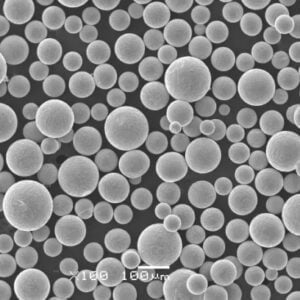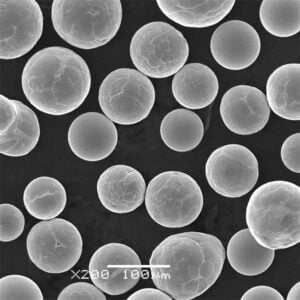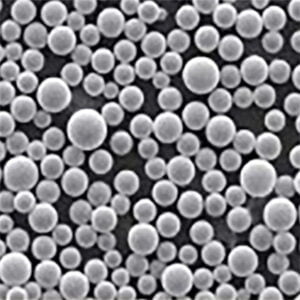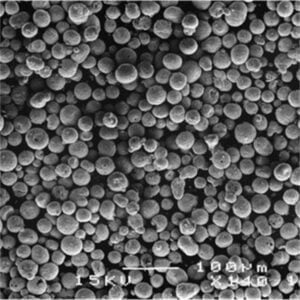チタンフラッシュパウダー
目次
チタンフラッシュパウダー は、微細なチタン金属と酸化剤から作られる火工品粉末である。点火すると、明るい閃光と熱を発します。この記事では、その組成、特性、用途、仕様など、チタンフラッシュパウダーについて詳しくご紹介します。
チタンフラッシュパウダーの組成
チタンフラッシュパウダーは2つの主成分からなる:
表1:チタンフラッシュパウダーの主成分
| コンポーネント | 詳細 | 役割 |
|---|---|---|
| ファインチタンメタル | 粒子径10μm以下 | 着火すると燃える燃料 |
| 酸化剤 | 一般的には過塩素酸カリウム | 酸素を供給し、チタンを素早く燃焼させる |
チタンパウダーの粒子が非常に細かいため、一度着火すると非常に速く完全に燃焼します。その結果、明るく熱い閃光が発生するのです。
重量で、チタンフラッシュパウダーは通常、以下を含む:
- 70-90% ファインチタンメタル
- 10-30% 過塩素酸カリウム
チタン金属の代わりに、あるいはチタン金属に加えて、マグネシウムやアルミニウムなどの他の金属燃料を使用することもできる。燃料と酸化剤の比率を調整することで、フラッシュの強さと持続時間を制御することができる。
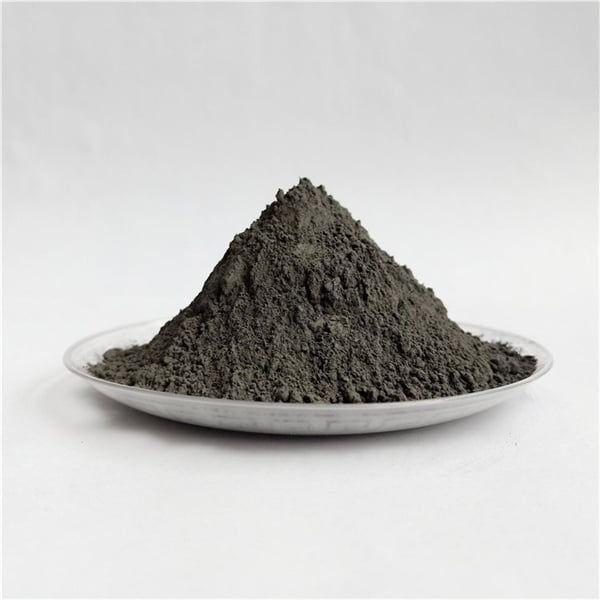
の性質 チタンフラッシュパウダー
チタンフラッシュパウダーは、火工品用途に有用な特別な特性を持っています:
表2:チタンフラッシュパウダーの主要特性
| プロパティ | 詳細 |
|---|---|
| 燃焼率 | 最大3000m/s |
| フラッシュ強度 | 非常に明るい - マグネシウムより高い |
| 色温度 | 10,000K以上 |
| 炎の温度 | 3,000-4,000°C |
| スモーク製造 | とても低い |
チタンフラッシュパウダーの非常に速い燃焼速度と高温が、鮮やかな閃光を生み出します。マグネシウムやアルミニウムのような他の一般的な火工金属の性能を凌駕します。
しかし、チタンフラッシュパウダーは、他の火工品に比べて煙の発生が非常に少ない。この強烈な閃光と低煙の組み合わせは、フラッシュ撮影のような用途には非常に望ましいものです。
製造工程
チタンフラッシュパウダーは、以下の工程を経てバッチプロセスで製造されます:
表3:チタンフラッシュパウダーの製造工程
| ステップ | 説明 |
|---|---|
| 1.ブレンド | チタン粉末と酸化剤粉末を十分に混合し、均質な混合物を作る。 |
| 2.コンパクション | ブレンドされたパウダーは、高圧下でケーキ状または顆粒状に圧縮される。これにより、エアポケットを最小限に抑えることができる。 |
| 3.分解 | ケーキや顆粒を分解し、ふるいにかけて、急速燃焼に最適な均一な小粒子を得る。 |
| 4.ミキシング | 成分の均一な分布を確保するための最終混合工程。得られたパウダーの粒子径は10μm以下。 |
| 5.パッケージング | パウダーは、保管中や輸送中の早期発火を防ぐため、防湿容器に包装されている。 |
粉末の均一性を達成し、汚染を防止するために、製造のすべての段階で厳格な管理が維持されます。これはチタンフラッシュパウダーの機能的性能と安全性にとって非常に重要です。
危険性と安全な取り扱い
火工品であるチタンフラッシュパウダーは、適切に取り扱われない場合、ある種の危険をもたらす:
表 4:チタンフラッシュパウダーの危険有害性と安全な取り扱い
| ハザード | 緩和方法 |
|---|---|
| 火災と爆発 | 着火源から離れた涼しく乾燥した場所に保管する。 |
| 皮膚および目の熱傷 | 保護具を着用し、皮膚や目に触れないようにする。 |
| 吸入 | 呼吸保護具を使用し、粉塵を吸入しないこと。 |
チタンパウダーは非常に可燃性が高く チタンフラッシュパウダー は常に細心の注意を払って取り扱わなければならない。粉末を取り扱う際は、近くに発火源がないことを確認してください。爆発する恐れのある粉塵の発生を避けること。
チタンフラッシュパウダーの混合、計量、またはその他の取り扱いに使用される作業場は、火災および爆発防止のための適切な工学的管理、保護具、および手順を備えている必要があります。作業員には、火工品安全手順に関する専門的な訓練が必要である。
用途と用途
チタンフラッシュパウダーは着火時に強烈な閃光を発するため、以下のような用途に非常に有効です:
表5:チタンフラッシュパウダーの用途と使用例
| 申し込み | 用途 |
|---|---|
| フラッシュ撮影 | 短時間の強い光で写真を照らす。 |
| 花火 | 明るく、パチパチとはじけるような光のバーストと「スター」エフェクトを生み出す。 |
| シミュレーターと信号 | 大きな音と非常に明るい閃光を発生させ、目に見え、耳に聞こえる効果をもたらす。 |
| 爆発物試験 | 光学センサーの評価に使用。明るい光の影響に対するシステムの耐性をテストする。 |
特定の火工品およびそれを使用する製品 チタンフラッシュパウダー を含む:
- 写真用フラッシュカートリッジ - 電子フラッシュが登場する前のカメラに携帯用照明を提供。シャッタータイミングを合わせる。
- フラッシュポット - マジシャン、パフォーマー、レスラーなどが、明るい閃光とともに大音量のレポートを発し、劇的効果を狙って投げる。火花を発生させる薬剤が含まれていることもある。
- 閃光手榴弾 - 警察や軍隊で使用され、強烈な閃光と爆音で一時的に標的の目をくらまし、耳を聞こえなくする。最も安全な無力化を可能にする。
- 爆竹 - チタンフラッシュパウダーを入れることで、大きな音と光で爆発するノベルティグッズの興奮度を大幅に高めることができる。
チタンフラッシュパウダーの需要成長を促進する要因としては、写真市場の拡大、"プレミアム "花火セグメントの成長、ビル清掃/人質救出用フラッシュバンの幅広い採用、COVID-19後の世界的な警察/軍事戦術機器への支出の増加、アジアの主要国における爆竹の文化的重要性の継続などが挙げられる。
仕様と規格
商業用に使用される火工品チタンフラッシュパウダーは、組成、粒度、保管/輸送要件、ラベル表示などに関する規制基準を満たす必要があります。
表6:チタンフラッシュパウダーの仕様と規格
| パラメータ | 仕様 | スタンダード |
|---|---|---|
| チタン含有量 | ≥ 70% | APAスタンダード87-1 |
| 酸化剤含有量 | 10-30% | APAスタンダード87-1 |
| 粒子径 | < 10 μm | MIL-DTL-382 |
| 最大水分 | 0.15% | SAE AS1062D |
| 保管温度 | <38°C | ASTM D3994-17 |
| 賞味期限 | 最長10年 | – |
通常、適用されるAPA、ASTM、SAE、CPSC、DOT、またはその他の規格への適合証明書が必要です。使用および所持には、多くの管轄区域において適切な免許および許可が必要な場合がある。小売販売や消費者向け花火の用途については、しばしば制限が適用される。
コスト分析
チタン金属価格は歴史的に不安定であり、これがフラッシュパウダーのコストを大きく変動させている。現在の価格は
表7:チタンフラッシュパウダーの価格帯
| グレード | kgあたりの価格 |
|---|---|
| 下級 | $100 – $250 |
| ミリタリーグレード | $250 – $500 |
| 宇宙資格 | $500 – $1,000+ |
価格設定は大きく左右される:
- 純度レベル
- 製造における品質管理
- 研究開発/テストデータ提供
- コンプライアンス認証状況
- 購入量
- アプリケーションの安全レベル
軍事および航空宇宙のユーザーは通常、厳しい仕様に適合する綿密に特性化されたフラッシュパウダーを入手するために多額のプレミアムを支払う。
世界のトップサプライヤーには、ヘールカラー、コメットスター、パイロパウダー、ハンレーインダストリーズなどがある。ディストリビューターは通常、特定の地域に特化している。
比較分析
表8:比較 チタンフラッシュパウダー 代替案付き
| パラメータ | マグネシウム・パウダー | アルミニウムパウダー | チタンフラッシュパウダー |
|---|---|---|---|
| 燃焼温度 | 2200°C | 2200-2400°C | >4000°C |
| 光効率 | 0.14 | 0.13 | 0.19 |
| 煙濃度 | 高い | 中程度 | とても低い |
| 耐湿性 | 貧しい | フェア | グッド |
| 賞味期限 | 1-2年 | 3~5年 | 最長10年 |
| kgあたりの価格 | $50-100 | $100-150 | $100-1000 |
火工品金属フラッシュパウダーの中で、チタンは輝度/効率の点で優れた照明性能を持ちますが、より一般的なMgまたはAl燃料よりも価格が割高になります。しかし、超低スモークは、一部のプレミアムアプリケーション(例えば写真撮影)において、その高いコストを相殺する視認性の利点を提供します。
チタンフラッシュパウダーの利点
- シミュレーター/火工品に有用な極端な明るさ
- 高温度定格が用途を広げる
- 煙が少ないため視認性が向上
チタンフラッシュパウダーの限界:
- 他の金属燃料に比べて高価
- 発火に敏感 - 特別な取り扱い上の注意が必要
- グレード間の閃光強度のばらつき
よくあるご質問
チタンフラッシュパウダーとは何ですか?
チタンフラッシュパウダーは、微粉化したチタン金属とその他の化学物質の混合物で、急速に発火・燃焼し、強烈な閃光と火花を発生させる。
チタンフラッシュパウダーを使う目的は何ですか?
チタンフラッシュパウダーは主に花火技術や花火に使用され、明るく白い火花や劇的な閃光を生み出し、花火大会の視覚効果を高めます。
チタンフラッシュパウダーは安全ですか?
チタンフラッシュパウダーは反応性が高く、取り扱いを誤ると危険です。チタンフラッシュパウダーは、その特性および安全上の注意を熟知した訓練を受けた花火師のみが使用する必要があります。
チタンフラッシュパウダーを扱う際の安全上の注意点は?
安全上の注意として、保護衣、保護眼鏡、手袋を着用すること。引火性物質から離れた涼しく乾燥した場所に保管し、管理された安全な環境でのみ点火すること。
チタンフラッシュパウダーはどのように発火するのですか?
チタンフラッシュパウダーは、電気点火器、ヒューズ、あるいは直火など、さまざまな方法で点火することができます。熱にさらされると容易に発火します。
シェアする
MET3DP Technology Co., LTDは、中国青島に本社を置く積層造形ソリューションのリーディングプロバイダーです。弊社は3Dプリンティング装置と工業用途の高性能金属粉末を専門としています。
関連記事
Met3DPについて
最新情報
製品

3Dプリンティングと積層造形用金属粉末







